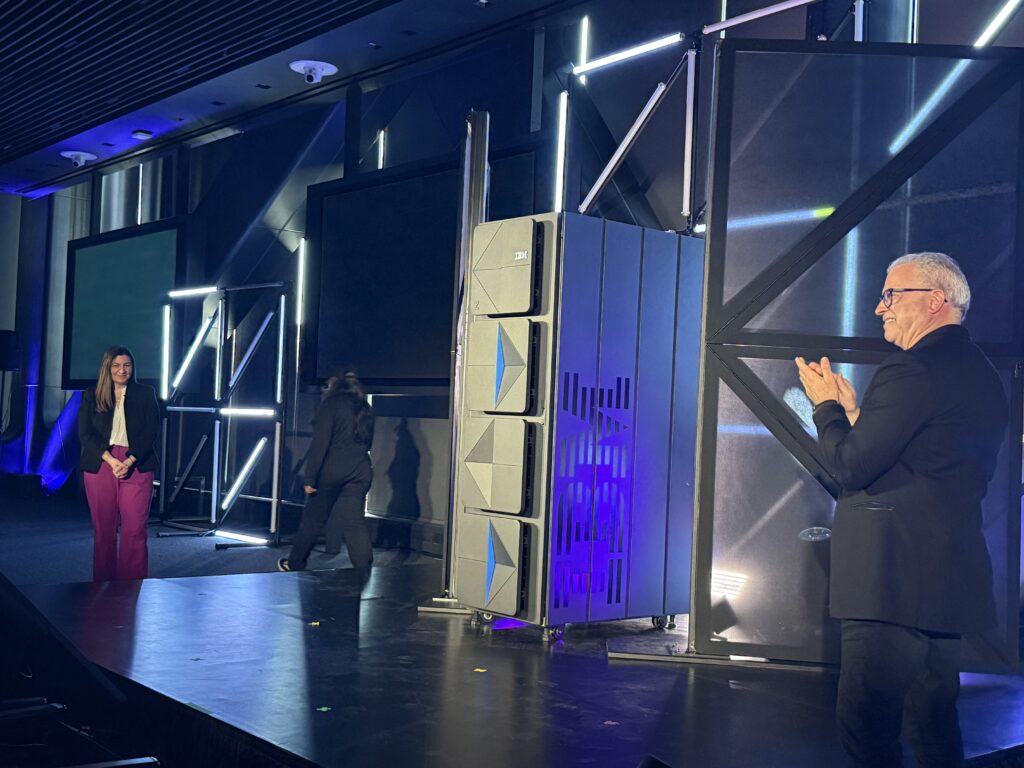z17 Tries to Top the GOAT
IBM looks to keep the momentum going with its new mainframe and a focus on future use cases

As general availability for the IBM z17 arrives, there’s no question the new mainframe system will outperform its predecessor in terms of “speeds and feeds,” but whether it can outperform the Z16 in the marketplace is another question. And in that respect, the bar is set higher than ever.
IBM has called the Z16 the most successful mainframe program in its history, with an install base that grew 30% over the z15. “So it is a live, healthy platform with a lot of client interest, new clients, new relevancy in the market,” Ric Lewis, IBM’s senior vice president of infrastructure, said at the z17 launch event held in April in New York City.
The center of global commerce was a fitting location to unveil the latest in a zSystems ecosystem that famously handles 70% of the world’s transactions by volume and, as Lewis noted, processed $1 quadrillion worth of transactions in 2024. “Think about that,” Lewis said. “ … Thirty-four times the entire GDP of the U.S. flowed through zSystems last year.”
IBM executives believe the new hardware is well equipped to take on that workload as use cases expand. “I think this is absolutely the most valuable software and broad capabilities of software from IBM that we’ve ever done with a launch,” said Ross Mauri, general manager for IBM Z and LinuxONE, “and I think you’re going to be amazed as you start to dig in and see what value it can provide for all of you.”

z17’s Beating Heart
The system behind the executives’ enthusiastic language is built around the new Telum II processor, which has eight cores running at 5.5GHz each and boasting 40% more on-chip cache capacity than the Telum I, in addition to an 11% single-thread performance boost. Looking at credit card fraud detection as an example use case, the new hardware yields a 7.5x inference throughput increase over the prior generation, according to the z17 Technical Introduction.
The Telum II has its own on-chip AI accelerator, but can be joined with up to 48 32-core PCIE-attached Spyre accelerators, designed to help with larger, more complex AI use cases. The Spyre accelerator is meant to be of particular use for large language models, leveraging 128GB of LPDDR5 memory for that specialty, Susan Eikhoff, director of IBM Z processor development, explained to TechChannel. “If an instruction comes through and says we need AI capabilities, you kick it off to that specialty AI engine that has 32 of those cores and a cache on there to help,” Eikhoff said.
Tina Tarquinio, vice president of product management for IBM Z and Linux ONE, did not mince words when describing the Spyre accelerator.“It’s truly a revolutionary chip,” she said.
AI Use Cases
Anti-money laundering, insurance underwriting, climate change modeling, medical image analysis, retail crime prevention—the use cases for AI have “just exploded,” Mauri said.
On the mainframe, one prominent use case is application modernization with tools like watsonx Code Assistant for Z. Skyla Loomis, general manager of IBM software, noted IBM’s clients are seeing five-fold improvement in developer productivity when refactoring COBOL applications using AI assistants. “Imagine having the ability to simply ask a question to an AI assistant to help you pinpoint the exact logic that you’re looking for, out of millions of lines of code. Well, that’s exactly what you can do now,” Loomis said.
Julie Trevisan, director of retail lending development for Bank of Montreal, got an inside look at the z17’s emphasis on AI when her bank was involved in the hardware’s development process as a client partner. “The Spyre accelerator, the Telum II chip—that’s going to move us forward,” Trevisan said, voicing excitement for uses like fraud detection, loan decisioning and code explanation.
She was especially enthusiastic about being able to process AI workloads on-premises instead of sending the data to the cloud and opening it up to potential security threats. “The security of doing the AI next to the data—I just can’t stop talking about that piece,” Trevisan said.
Getting Ahead of Security Threats
Further addressing security, IBM wasted little time capitalizing on its February 2025 acquisition of HashiCorp, integrating its Vault secrets management system into the z17. HashiCorp is recognized as a pioneer in identity-based secrets management, an approach crucial for modern security architectures like zero trust. Vault helps centralize and manage sensitive data such as API keys, passwords and certificates, eliminating the need to maintain multiple static credentials.
Other security resources on the z17 include Crypto Discovery and Inventory, a tool that helps users understand the way cryptography is being used across their applications and infrastructure. Additionally, z/OS Threat Detection helps uncover insider threats by using AI to look for abnormalities in data access patterns.
The z17 also has future threats in mind, equipped with quantum-safe algorithms selected by the National Institute of Standards and Technology (NIST). IBM played a major role in creating these algorithms, which were forged under warnings that quantum computers will one day be able to break today’s standard encryption.
“We have to look out over the horizon. We have to look five and 10 years down the road at where our clients are going and what the requirements are going to be,” Mauri said. “We can’t just look at the cool stuff that’s going on in the industry today.”
If they got it right with the z17, the z16’s reign as IBM’s most successful mainframe will be a short one.